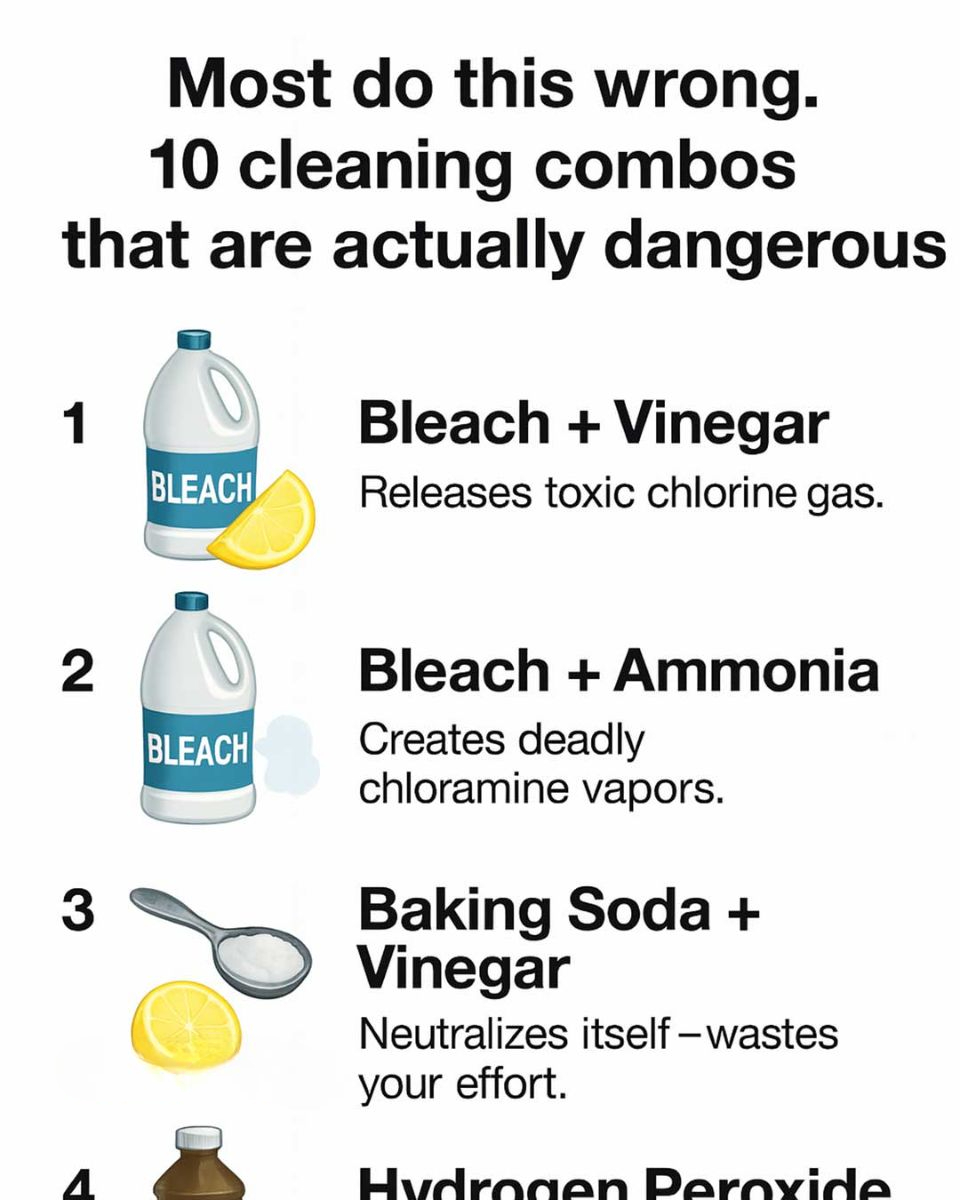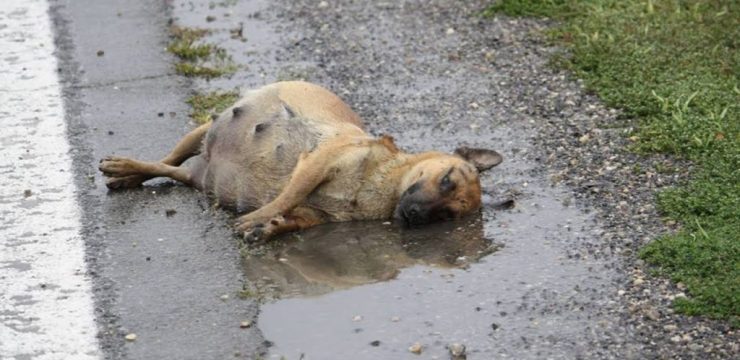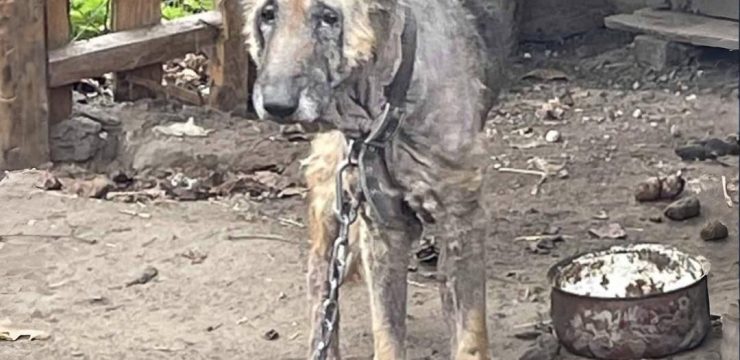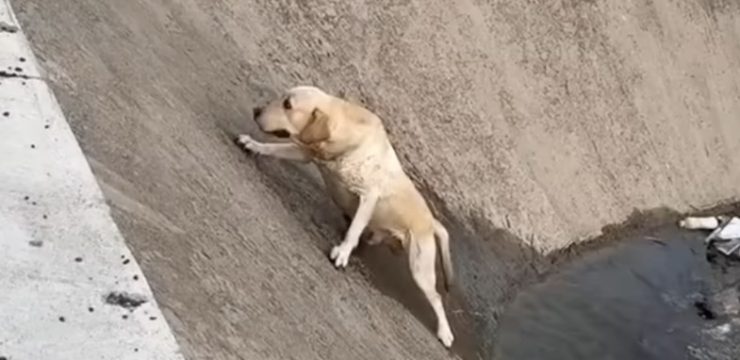Keeping our homes clean is part of everyday life, but sometimes, in an effort to make cleaning easier or more effective, people reach for multiple products and mix them together. While this might seem harmless or even like a clever hack, some cleaning combinations can be ineffective or extremely dangerous. Understanding which products don’t go well together can help you avoid harmful chemical reactions, toxic fumes, and unnecessary risks. Here are ten common cleaning product pairings that you should never mix if you want to keep your home—and your health—safe.

1. Bleach and Vinegar: A Toxic Mistake
Bleach is a powerful disinfectant, and vinegar is a common natural cleaner. But combining them is a recipe for trouble. When mixed, these two chemicals create chlorine gas, which can irritate your eyes, throat, and lungs—even in small amounts. Instead, use bleach on its own, following the instructions on the label for proper dilution and ventilation.
2. Bleach and Ammonia: A Hazardous Reaction
Bleach and ammonia are two strong cleaning agents that should never be used together. When mixed, they release chloramine vapors, which are highly toxic and can cause coughing, chest pain, breathing problems, and even serious lung damage. Always use these products separately and allow one to dry completely before applying the other.
3. Baking Soda and Vinegar: Not the Miracle Cleaner You Think
Baking soda and vinegar are often touted as a natural cleaning powerhouse, but in reality, they cancel each other out. Since baking soda is a base and vinegar is an acid, combining them results in water and carbon dioxide gas. The fizzing might look impressive, but it doesn’t actually clean anything. Use baking soda for scrubbing and vinegar for disinfecting, but apply them one after the other, not together.
4. Hydrogen Peroxide and Vinegar: Creates a Corrosive Byproduct
Separately, hydrogen peroxide and vinegar are effective cleaners. But mixing them forms peracetic acid, a corrosive substance that can irritate your skin, eyes, and respiratory tract. This compound is used in industrial cleaning but isn’t safe for home use. Stick to using one product at a time to avoid dangerous reactions.
5. Rubbing Alcohol and Bleach: Produces Harmful Fumes
Combining rubbing alcohol with bleach creates chloroform—a chemical once used as an anesthetic but now known to cause dizziness, nausea, and even organ damage with prolonged exposure. This is an extremely dangerous mixture, so never attempt to use them together. Keep them stored separately and use only one at a time in a well-ventilated area.
6. Vinegar and Castile Soap: Leaves a Greasy Mess
Vinegar and Castile soap are both natural cleaners, but they don’t mix well. The acidic vinegar breaks down the soap, turning it back into its original oils and leaving behind a greasy residue that’s harder to clean. Instead, use Castile soap first to clean surfaces, then rinse with vinegar afterward if you want extra disinfecting power.
7. Drain Cleaners and Other Chemicals: A Volatile Mix
Drain cleaners are designed to dissolve tough clogs using powerful chemicals. Mixing them with bleach, ammonia, or other cleaners can cause violent reactions that release toxic gases or create dangerous splashes of corrosive material. Always use drain cleaners exactly as directed and never combine them with anything else.
8. Bleach and Toilet Bowl Cleaner: Can Release Poisonous Gas
Many toilet bowl cleaners contain acids that react dangerously with bleach, producing chlorine gas. Breathing this gas can cause severe respiratory distress and other health problems. If you’re using bleach, never follow up with another strong cleaner in the same space. Use only one product at a time and ensure good ventilation.
9. Vinegar and Hydrogen Peroxide: Doubles the Danger
Like the earlier mention, mixing vinegar with hydrogen peroxide produces peracetic acid, which is harmful to your skin and lungs. Even if you think combining two disinfectants will boost cleaning power, it’s not worth the risk. Use one, let the area dry, and then apply the other if needed.
10. Baking Soda and Lemon Juice: Weakens Both Cleaners
This DIY combo is popular online, but it’s not as effective as many believe. Mixing baking soda (a base) with lemon juice (an acid) neutralizes both, producing water and carbon dioxide gas. While the fizz might help loosen grime temporarily, you’ll get better results using lemon juice on its own as a natural disinfectant or baking soda as a scrub for tough stains.
The bottom line: more cleaning products don’t mean better cleaning power, and mixing chemicals can put your health at serious risk. Always read product labels, use cleaners as directed, and never mix different solutions unless you’re certain it’s safe. Your best bet for a clean home is using the right product for the job—one at a time.





